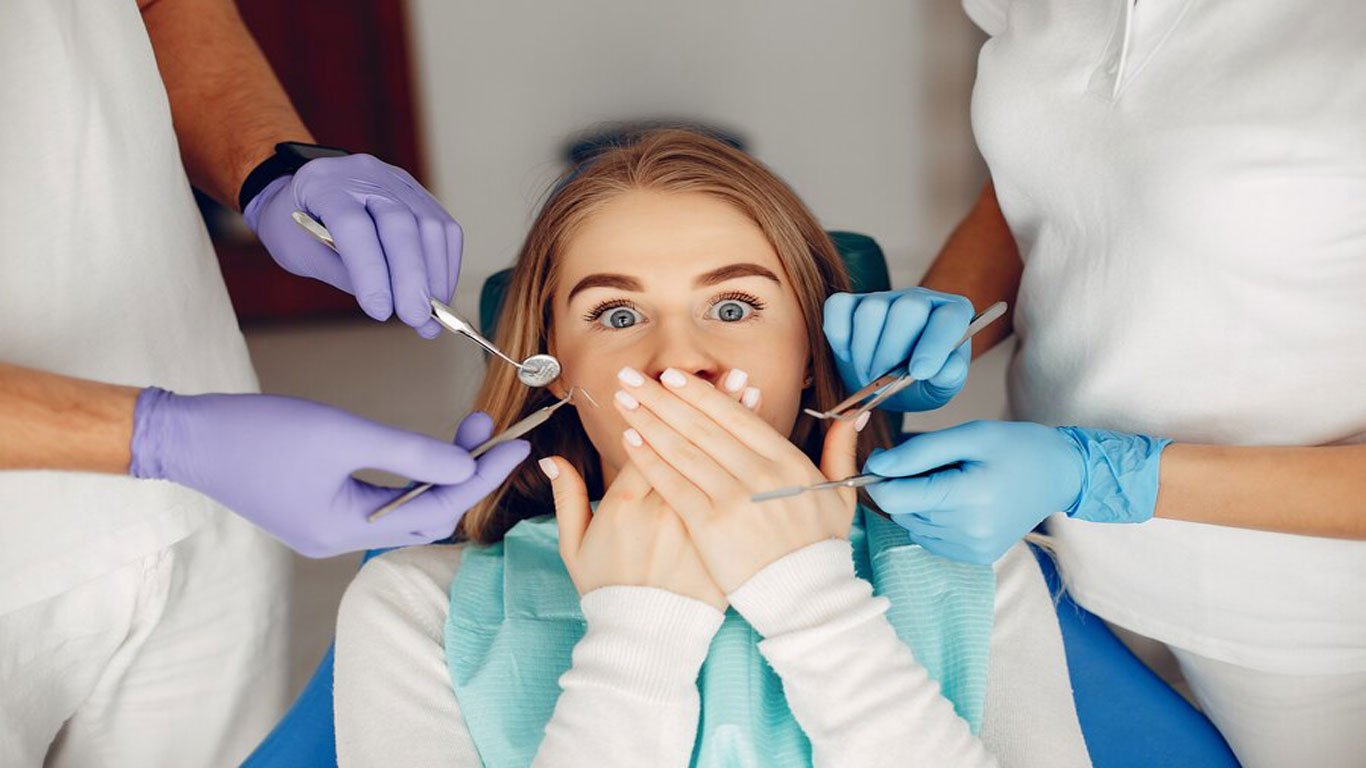Smoking and Oral Cancer in 2025 – Risks, Symptoms, and Prevention
Based on Canada.ca, the risk of oral cancer in smoking people is 5 to 10 times greater than in non-smokers, and the risk of developing the disease is significantly increased when combined with alcohol consumption. In 2019 alone, Canada (excluding Quebec) reported approximately 5,300 new cases of oral cancer, resulting in 1,450 deaths.
Disturbingly, based on data gathered between 2015-2017, it’s predicted that 36% of Canadians (excluding Quebec) diagnosed with oral cancer will die within five years.
At York Orthodontics, we strongly prioritize raising awareness about the direct relationship between smoking and oral cancer and aspire for a smoke-free world.
What’s Oral Cancer?
Oral cancer develops due to the uncontrolled growth of cells in the mouth, resulting in tumor formation. It can occur in various areas, such as the lips, cheeks, tongue, and gums, as well as the floor, roof, and back of the mouth.
On average, men are more susceptible to oral cancer, with a higher risk of developing the disease on their tongue and the mouth’s floor. However, the gums and tongue are the most common sites in women.
Common symptoms of oral cancer include:
- Bony tumors
- Open sores
- White or red lesions
- Patches or plaques
The two most common treatments for oral cancer are surgery and radiation therapy. In surgery, the affected tissue is often removed, and in some cases, parts of the jawbone or tongue may also be removed. This can affect the appearance of the face and the ability to swallow, chew, and speak.

Smoking and Oral Cancer- Does Quitting Smoking Reduce the Risk of Oral Cancer?
The studies have shown that quitting tobacco significantly reduces the size of pre-cancerous lesions, plaques, or patches in the mouth.
Again, based on Canada.ca, after five years of quitting smoking, the risk of developing oral cancer starts to decrease, and after 20 years, the risk of developing the disease is the same as individuals who’ve never smoked in their lives.
At York Orthotics, we maintain an unwavering stance on smoking: quitting. We strongly believe that quitting smoking is the best way to avoid developing oral cancer.
Please pay attention to the fact that, if you have oral cancer, quitting smoking can improve your recovery process. Moreover, quitting decreases the likelihood of getting new oral cancer in individuals who’ve previously been treated.
Continuing to smoke after being diagnosed with the cancer significantly lowers the chance of survival and increases the risk of developing other smoking-related cancers, such as lung cancer.
Mouth Cancer and Smoking- Can Quitting Smoking Be Beneficial?
In fact, quitting smoking at any age is beneficial to one’s health, as it reduces the likelihood of premature death, improves overall health, and boosts quality of life. Even people who’ve smoked or used tobacco products heavily for many years will experience substantial benefits from quitting.
Cancer and Smokeless Tobacco
The first question that may arise in your mind is: What’s smokeless tobacco? Smokeless tobacco, also known as chewing tobacco or oral tobacco, is tobacco that’s not burned. When chewing tobacco, its nicotine absorbs through the lining of the mouth, causing harm to our oral health.
Three main types of smokeless tobacco incldue:
- Chewing Tobacco: Chewing tobacco is a form of tobacco that comes in loose leaves, bricks (plugs), or twisted ropes. It is commonly placed between the lower lip and cheek, usually towards the back of the mouth. The tobacco can either be chewed or held in place, and saliva can be either spit out or swallowed.
- Snuff: Snuff is a form of tobacco that is finely cut or powdered. It can be purchased in various scents and flavors. Snuff is typically packaged either moist or dry, with moist snuff being more common in the United States. It is available in loose form, as dissolvable lozenges or strips, or in small pouches similar to tea bags. Users typically place a pinch or pouch of moist snuff between the cheek and gums or behind the upper or lower lip. The term “moist snuff” is commonly referred to as “snus” and is pronounced as “snoose.” Additionally, some individuals choose to inhale dry snuff into their nose.
- Dissolvable: This type of tobacco is available in the form of lozenges, small mint-like orbs, and toothpick-shaped sticks
All types of smokeless tobacco may cause oral cancer, esophageal cancer, and pancreatic cancer. Moreover, they can lead to other diseases like gum disease, heart disease, and oral lesions other than cancer, such as leukoplakia, which is precancerous white patches in the mouth.

A common question is whether users can get addicted to smokeless tobacco. The answer to this question is a big yes. Please note that all types of tobacco, including smokeless tobacco, can cause addiction due to their nicotine content, which is absorbed directly into the bloodstream through the mouth, providing easy access to the brain. Even after the tobacco is fully removed from the mouth, nicotine continues to be absorbed into the bloodstream, remaining in the user’s body for a longer duration compared to smoked tobacco.
Another frequently asked question is whether smokeless tobacco is less hazardous than smoking cigarettes. According to the cancer.gov website, all types of tobacco products are harmful and can lead to cancer or various noncancerous oral conditions. The risks, including nicotine addiction, can vary significantly across different smokeless tobacco products due to variations in nicotine levels, carcinogens, and other toxins present in each product.
Smoking Mouth Cancer Symptoms
Though the signs of oral cancer highly depend on the tumor’s location, there are thin, irregular, white patches in the mouth. They can also be mixed red and white patches (mixed leukoplakia), which are more likely to be cancerous when biopsied. A persistent rough patch with ulceration and a raised border that causes minimal pain is a classic warning sign. On the lip, the ulcer is typically crusting and dry, while in the pharynx, it often manifests as a mass. Other associated symptoms may include a white patch, loose teeth, bleeding gums, persistent earache, numbness in the lip and chin, or swelling.
When cancer extends to the throat, it can cause difficulty swallowing, particularly in cases of HPV16+ cancer located at the base of the tongue. Another visible sign can be the unilateral enlargement of the tonsil, also resulting from the same cause. Painful swallowing and changes in voice can also occur. Initially, the lesions are usually not painful, but as they grow larger, a burning sensation may be experienced. As the lesion spreads to the lymph nodes in the neck, a painless and hard mass may develop. If the cancer spreads to other parts of the body, general aches can occur, often attributed to bone metastasis.
Generally speaking, if you notice the below signs, you should consult a healthcare professional for a proper evaluation and diagnosis:
- Red or White Patches: Any unusual patches on the gums, tonsils, tongue, or lining of the mouth.
- Persistent Mouth Sores:Sores in the mouth that don’t heal within a couple of weeks can be a symptom
- Changes in Speech: Changes in how your teeth or dentures fit together or changes in speech.
- Difficulty Swallowing: Trouble swallowing or persistent hoarseness could be indicative.
- Persistent Pain: Pain in the mouth or ear that doesn’t go away.
Always remember that early detection is a crucial key to successful treatment, as these symptoms can be caused by various conditions.

Nicotine Gum and Cancer
You may wonder, but scientific studies have revealed a direct relationship between nicotine gum and cancer. In other words, all nicotine replacement products, such as lozenges, nicotine chewing gum, and inhalers, that are designed to help quit smoking may actually increase the risk of developing cancer. These studies indicate that the nicotine present in these products can have an adverse effect on a genetic mutation, which is commonly found in oral cancer, exacerbate its progression.
It has been suggested that certain chemicals in cigarettes, such as tar, may not be as potent a carcinogen as nicotine, but they can contribute to the formation of tumors.
Based on studies published on Oral Cancer News, a gene called FOXM1 is found in many tumors as well as pre-cancerous cells in the mouth. If you already have a mouth lesion expressing high levels of FOXM1 and you expose it to nicotine, you increase the likelihood of it developing into cancer.
Although nicotine replacement products are commonly used to quit smoking, it is important to be aware that they carry certain risks. In fact, they could potentially increase the risk of cancer development more than smoking itself.

Odds of Getting Cancer from Chewing Tobacco
The use of “dip,” such as chewing tobacco or snuff, is linked with several types of cancer, which include cancers of the throat, esophagus, lips, gum, tongue, cheeks, and pancreas.
Based on statistics published on the verywellheath website, in the US alone, more than 2,300 people who use smokeless tobacco products are diagnosed with the mentioned cancer, with around 70% (1,600 individuals) of them getting oral cancer.
Snuff or dip is made of finely ground tobacco, which can be dry, packaged, or moist. These products have various uses, with some placed in the mouth while others are inhaled into the nose.
When it comes to oral cancer and smoking, please note that smokeless tobacco may be more harmful due to its high level of nicotine. For example, consider compounds found in dip, each of which alone can cause cancer:
- Lead
- Cadmium
- Polonium
- Benzopyrene
- Formaldehyde
- Tobacco-specific nitrosamines
Furthermore, it is crucial to highlight that individuals over the age of 50 have the highest risk of developing oral cancer. Regular smoking, the use of any type of tobacco product, and excessive alcohol consumption can also increase the likelihood of oral cancer. Additionally, the use of snuff or dip can easily lead to cancer of the lips, cheeks, and gums.
As mentioned earlier, men who are addicted to using smokeless tobacco are more susceptible to developing oral cancer. The disease often begins with the appearance of white patches inside the mouth or throat, known as leukoplakia.
Other common chew tobacco cancers that may develop in individuals include esophageal cancer and pancreatic cancer. It has been observed that individuals between the ages of 45 to 70 face the highest risk of getting esophageal cancer, with men being particularly susceptible. The symptoms of esophageal cancer include difficulty swallowing, chronic coughing, and hoarseness.
Based on the Verywellhealth website, pancreatic cancer is considered the fourth leading cause of death in the US. Some of the symptoms of this disease include nausea and vomiting, weight loss and poor appetite, pain in the back and abdomen, and jaundice, which is characterized by yellowing of the eyes and skin.
In addition to cancer, smokeless tobacco poses other long-term health risks, including stroke, gum disease, tooth decay, cardiovascular disease, etc.

Bottom Line
Consistently using tobacco, including chewing tobacco, can have significant impacts on your life, overall health, and loved ones. It is crucial to consider the long-term effects on your health. Opting for healthy habits like maintaining a balanced diet, engaging in regular exercise, and avoiding practices that can contribute to health problems is of utmost importance.
Additionally, seeking guidance from dental professionals like York Orthodontics can provide valuable support in maintaining your oral health and preventing potential complications associated with tobacco use.
FAQ
How Does Using Tobacco Increase the Risk of Oral Cancer?
carcinogens are chemicals found in both smoked and chewing tobacco that can cause genetic changes in the cells of the mouth cavity, increasing the risk of oral cancer by exposing the mouth to the carcinogens, either through inhalation while smoking or through direct contact while chewing tobacco products.
What’s the average age of mouth cancer?
The average age at diagnosis for mouth cancer varies, but it’s more commonly found in people over the age of 50. However, it’s important to note that mouth cancer can occur in younger individuals as well, especially with factors like tobacco or alcohol use, HPV infection, and sun exposure contributing to its development.
Regular dental check-ups and self-examinations can help in early detection and treatment. If you suspect any symptoms or concerns, it’s crucial to consult a healthcare professional for proper evaluation and guidance.
What are the characteristics of the early stages of mouth cancer?
The primary symptoms often include the presence of a sore or lump in the mouth, lips, or throat. Additionally, you may notice the appearance of a white or red patch on the affected tissue. Other indications may involve difficulties in swallowing or moving the jaw, experiencing pain in one ear, and a sensation of numbness in the mouth or tongue.
